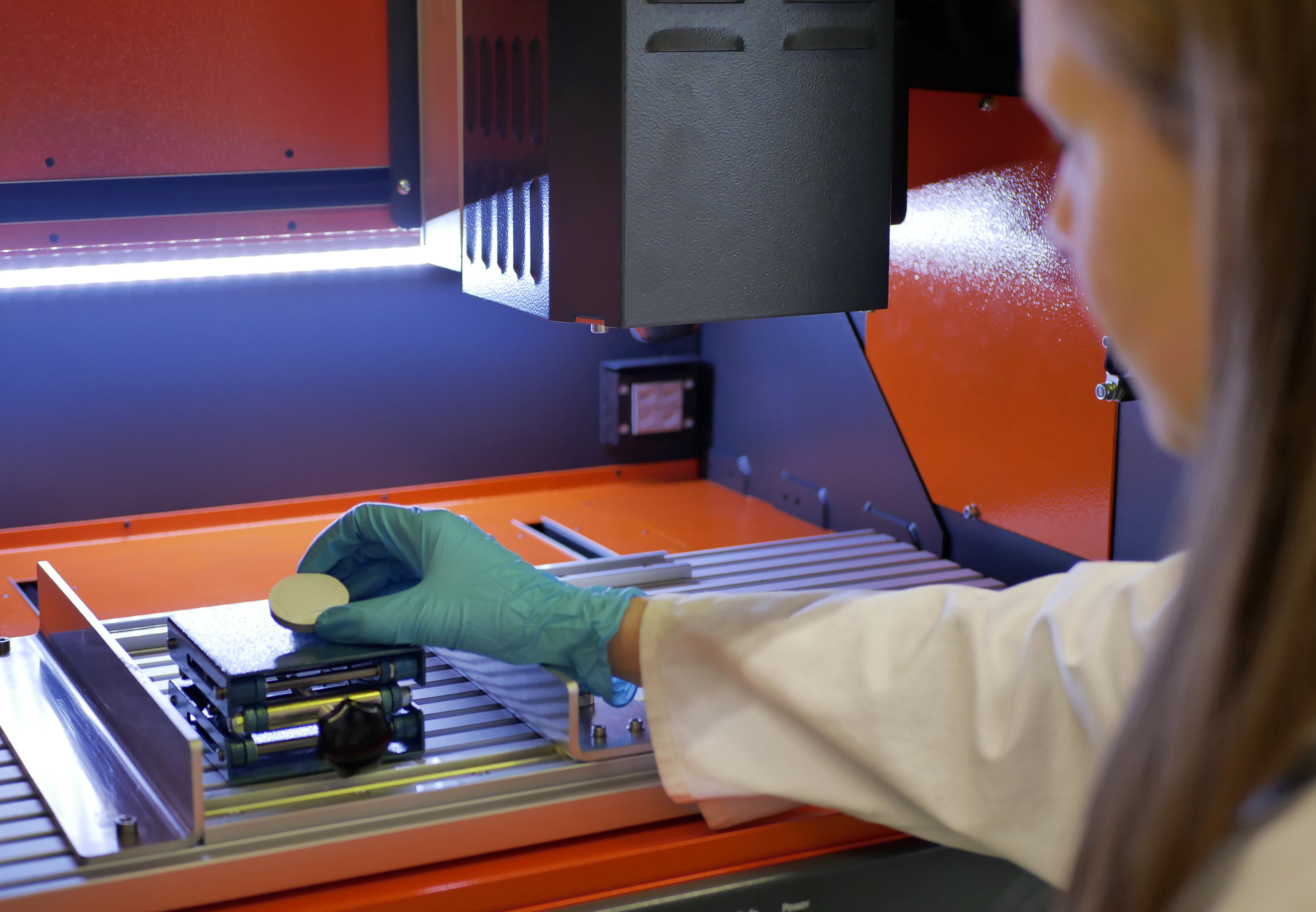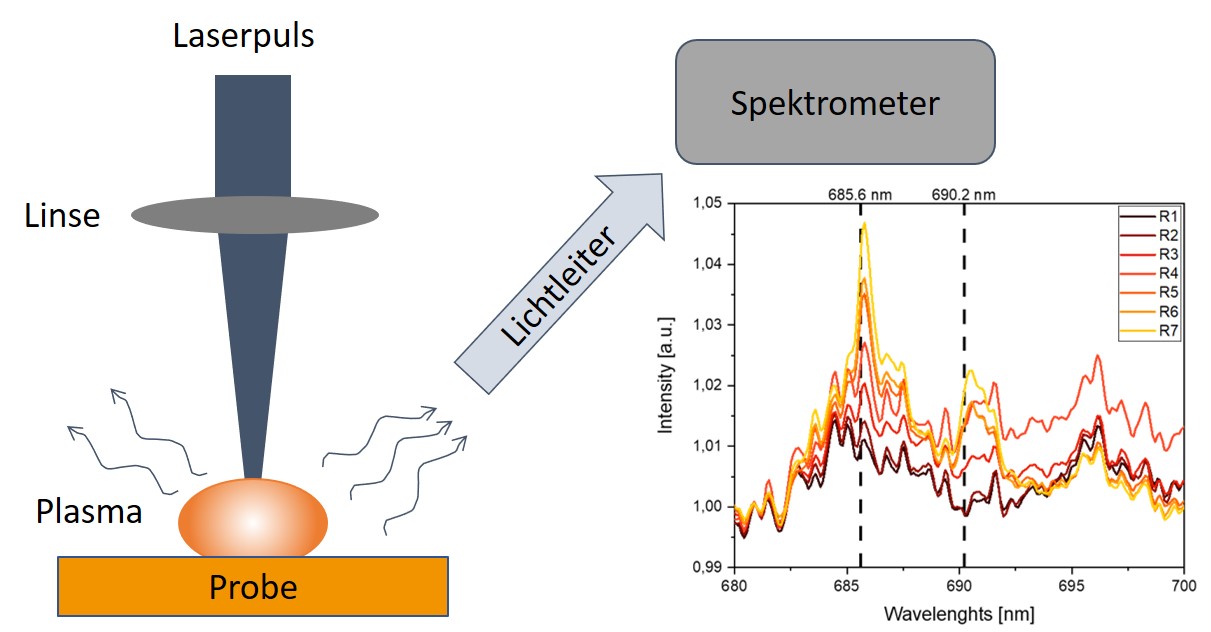Rapid material analysis of surfaces and coatings using laser-induced breakdown spectroscopy (LIBS)
Laser-induced breakdown spectroscopy (LIBS), an innovative optical surface analysis technique, opens up a broad range of applications. This measurement method enables the elemental composition of solid, liquid or gaseous substances to be determined in a contactless manner. At the Fraunhofer Center for Silicon Photovoltaics CSP in Halle (Saale), LIBS technology combined with powerful evaluation algorithms is used to carry out precise and extremely rapid multi-element analyses. In a study published recently in which fluorine loss during the melting of bioactive glasses and glass-ceramics was examined, technicians at the Fraunhofer CSP demonstrated the effectiveness of LIBS.


The possible applications of the spectroscopic measurement method LIBS for qualitative and quantitative element analysis in a vacuum are diverse, ranging from principle-based element analysis in a vacuum, contactless remote measurements used for example in radioactive environments to the sorting of raw materials for recycling and online quality control in manufacturing. The underlying principle of LIBS is the spectral analysis of element-specific emission lines. A high-energy short-pulse laser beam dislodges a small quantity, typically a few µm3, from the surface of the sample, whereupon local heating involving temperatures of up to 10,000 ºC leads to the creation of light-emitting plasma. The plasma shines with a material-specific light spectrum, during which the spectral distribution of the light is directly recorded in real time. This data enables the elemental distribution at the measurement point to be exactly determined. Laser-induced breakdown spectroscopy allows the simultaneous measurement of a number of chemical elements.
LIBS has been successfully employed at the Fraunhofer CSP since 2019 for the analysis of elemental behavior and distributions. “We support clients and partners from industry and public sector clients with our expertise in the field of plasma spectroscopy and can provide assistance e.g. in monitoring coating processes, optimizing recycling processes and in the development of inline material inspection systems. In so doing, we exploit the advantages offered by LIBS as opposed to competing methods: the analysis is contactless, the amount of sample required is small and there is no need or virtually no need to prepare the samples”, says Stefanie Wahl, a technician at the Fraunhofer CSP.
The effectiveness of this method e.g. when investigating the quantity of fluorine during the melting of bioactive glasses and glass-ceramics has just been demonstrated by the Fraunhofer CSP in a joint study conducted with technicians at the Otto Schott Institute of Materials Research. Among various analysis methods, the choice fell on LIBS because this method “enables fluorine quantification with a reduction in analysis times and with a high degree of spatial resolution” adds Stefanie Wahl.